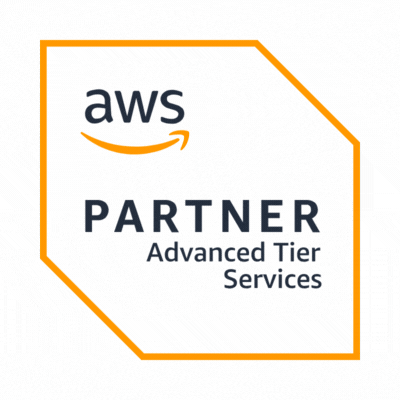Continuous Integration (CI) and Continuous Delivery (CD) have emerged as crucial practices in the world of DevOps, providing a framework to automate and streamline the software development lifecycle. This article explores the principles and implementation of CI/CD in the context of Amazon Web Services (AWS) DevOps, highlighting the key benefits and best practices.
Understanding Continuous Integration and Continuous Delivery
Continuous Integration (CI) is a software development practice that involves regularly integrating code changes from multiple contributors into a shared repository. The primary goal is to detect and address integration issues early in the development process. Automated builds and tests are essential components of CI, ensuring that the codebase is always in a working state.
Continuous Delivery (CD) extends the CI concept by automating the entire software release process. This includes automatically deploying the application to various environments, such as testing, staging, and production, once it passes all necessary tests in the CI phase. CD aims to make software delivery a routine, reliable, and low-risk process.
Benefits of CI/CD in AWS DevOps

Rapid Feedback and Bug Detection: CI/CD pipelines enable developers to receive immediate feedback on their code changes. This rapid feedback loop helps in identifying and fixing bugs early in the development cycle, reducing the time and effort required for bug resolution.
Consistent and Reliable Builds: Automated build processes ensure consistency in the generated artifacts. This eliminates the "it works on my machine" problem and ensures that all team members work with the same version of the application, reducing compatibility issues.
Efficient Collaboration: CI facilitates collaboration among developers by integrating their code changes regularly. This encourages a more collaborative and transparent development environment, where team members can stay informed about each other's contributions.
Faster Time to Market: CD automates the deployment process, allowing for faster and more reliable releases. This acceleration in the release cycle enhances the organization's ability to respond quickly to market demands and stay competitive.
Risk Mitigation: Automated testing and deployment processes help identify and address issues early, reducing the risk of deploying defective code to production. This results in more stable releases and fewer post-deployment incidents.
Implementing CI/CD in AWS DevOps
1. AWS CodePipeline
AWS CodePipeline is a fully managed CI/CD service that automates the build, test, and deployment phases of the release process. It supports integration with various AWS services, third-party tools, and custom scripts, providing flexibility in designing complex pipelines. An example CodePipeline configuration might look like this:
2. AWS CodeBuild
CodeBuild is a scalable and fully managed build service that compiles source code, runs tests, and produces ready-to-deploy artifacts. It seamlessly integrates with CodePipeline, allowing developers to define build specifications using familiar build environments.
3. AWS CodeDeploy
CodeDeploy automates application deployments to various AWS services, including EC2 instances, Lambda functions, and ECS clusters. It supports blue-green deployments and provides detailed deployment logs, making it easier to troubleshoot issues.
4. AWS CodeCommit
CodeCommit is a fully managed source control service that hosts secure and scalable Git repositories. It integrates seamlessly with other AWS DevOps services, providing a secure and collaborative environment for version control.
5. AWS CloudFormation
Infrastructure as Code (IaC) is a fundamental principle in DevOps. AWS CloudFormation allows developers to define and provision AWS infrastructure in a declarative manner. This ensures consistency across different environments and facilitates versioning of infrastructure changes. An example CloudFormation template might look like this:
Best Practices for CI/CD in AWS DevOps
1. Automated Testing
Implement comprehensive automated testing, including unit tests, integration tests, and end-to-end tests, to ensure the reliability of code changes. AWS provides services like AWS CodeBuild for running these tests in a scalable and controlled environment.
2. Artifact Versioning
Version artifacts produced during the CI phase to enable traceability and rollbacks if needed. AWS CodePipeline and CodeBuild support artifact versioning, allowing developers to manage and track changes effectively.
3. Infrastructure as Code
Define infrastructure using CloudFormation templates to ensure consistency across environments. This practice helps in managing infrastructure changes in a version-controlled manner and reduces the risk of configuration drift.
4. Security in the Pipeline
Integrate security checks into the CI/CD pipeline to identify vulnerabilities early in the development process. Tools like AWS CodeArtifact and AWS CodeScan can be used to scan for security issues in dependencies and code.
5. Monitoring and Logging
Implement robust monitoring and logging mechanisms to track the performance of CI/CD pipelines. AWS CloudWatch provides monitoring capabilities, and integrating with AWS CloudTrail ensures detailed audit logs of pipeline activities.
6. Environment Isolation
Maintain separate environments for development, testing, staging, and production. This ensures that changes are tested in an environment that closely resembles production before deployment, reducing the likelihood of issues in the live environment.
7. Continuous Feedback
Encourage a culture of continuous improvement by regularly reviewing and optimizing the CI/CD pipeline. Collect feedback from the development and operations teams to identify areas for enhancement and implement iterative improvements.
Conclusion
Continuous Integration and Continuous Delivery have become indispensable practices in modern software development, empowering organizations to deliver high-quality software at a faster pace. In the context of AWS DevOps, leveraging services like CodePipeline, CodeBuild, CodeDeploy, and others enables the seamless implementation of CI/CD pipelines.


















